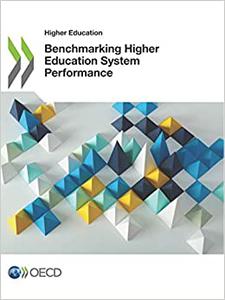
OECD, "Higher Education Benchmarking Higher Education System Performance"
English | 2019 | pages: 644 | ISBN: 9264755802 | PDF | 14,4 mb
The scope of contemporary higher education is wide, and concerns about the performance of higher education systems are widespread. The number of young people with a higher education qualification is expected to surpass 300 million in OECD and G20 countries by 2030. Higher education systems are faced with challenges that include expanding access, containing costs, and ensuring the quality and relevance of provision. The project on benchmarking higher education system performance provides a comprehensive and empirically rich review of the higher education landscape across OECD countries, taking stock of how well they are performing in meeting their education, research and engagement responsibilities.
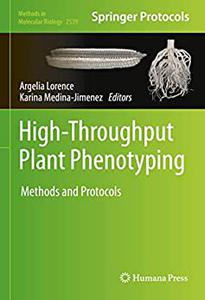
High-Throughput Plant Phenotyping
English | 2022 | ISBN: 1071625365 | 300 Pages | PDF (True) | 12 MB
This volume looks at a collection of the latest techniques used to quantify the genome-by-environment-by-management (GxExM) interactions in a variety of model and plant crops. The chapters in this book are organized into five parts. Part One discusses high-throughput plant phenotyping (HTPP) protocols for plants growing under controlled conditions. Part Two present novel algorithms for extracting data from seed images, color analysis from fruits, and other digital readouts from 2D objects. Part Three covers molecular imaging protocols using PET and X-ray approaches, and Part Four presents a collection of HTPP techniques for crops growing under field conditions. The last part focuses on molecular analysis, metabolomics, network analysis, and statistical methods for the quantitative genetic analysis of HTP data. Written in the highly successful Methods in Molecular Biology series format, chapters include introductions to their respective topics, lists of the necessary materials and reagents, step-by-step, readily reproducible laboratory protocols, and tips on troubleshooting and avoiding known pitfalls.
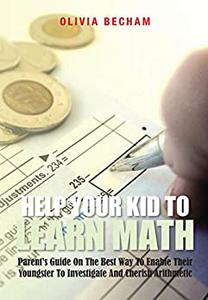
Olivia Becham, "Help Your Kid To Learn Math: Parent's Guide On The Best Way To Enable Their Youngster To Investigate And Cherish Arithmetic"
English | 2019 | ASIN: B07W1FGTSP | EPUB | pages: 44 | 0.2 mb
Most guardians will concur that it is a brilliant encounter to snuggle up with their kid and a decent book. Scarcely any individuals will say that regarding blaze cards or pages of math issues. Consequently, we have arranged this book to offer some math exercises that are important just as fun. You should need to have a go at doing some of them to enable your youngster to investigate connections, take care of issues, and see math in a positive light. These exercises use materials that are anything but difficult to discover. They have been arranged so you and your youngster may see that math isn't simply work we do at school at the same time, rather, a piece of life.

Heinz-Wolfram Kasemir: His Collected Works By
2013 | 733 Pages | ISBN: 0875907377 | PDF | 108 MB
Content:
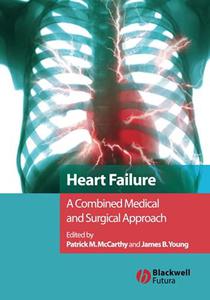
Heart Failure: A Combined Medical and Surgical Approach By
2007 | 324 Pages | ISBN: 140512203X | PDF | 6 MB
Providing optimal care for heart failure patients is a complex challenge that requires cooperation and coordination across multiple disciplines. Now, you can apply the successful techniques pioneered at the Cleveland Clinic, which are carefully explored and explained in this text. Drs. McCarthy and Young draw on their experience to show how an interdisciplinary team works together to: arrive at a proper diagnosis initiate medical therapy make decisions regarding the best use of percutaneous therapies, surgical therapies, electrical therapies, and the use of mechanical circulatory support devices and transplantation. Throughout the book, they present the most updated evidence for both drug trials and surgical trials. They emphasize the benefits of performing the most complete surgery that is practical, then continuing medical therapy. Each chapter focuses on one aspect of treatment, but the authors recognize that the best way to manage an individual patient is often to adapt a variety of different therapies. They state their opinions clearly, identifying which part of care is science and which is art. Heart Failure: A Combined Medical and Surgical Approach is a true collaboration that helps you identify the most effective strategies - operative interventions, pacing and ICD treatment, new diagnostic tools, and pharmacotherapeutic developments - and implement them for your patients.Content: Chapter 1 Epidemiology of Heart Failure: Progression to Pandemic? (pages 1-8): Randall C. StarlingChapter 2 Heart Failure Clinical Trials: Shaping the Evidence for Treatment Guidelines (pages 9-20): James B. YoungChapter 3 Standard Medical Therapy of Heart Failure (pages 21-43): Mohamad H. YamaniChapter 4 Novel Therapies in Heart Failure (pages 44-68): W.H. Wilson Tang and Gary S. FrancisChapter 5 Implantable Cardioverterdefibrillators and Biventricularpacemakers in Congestive Heart Failure (pages 69-98): Mandeep Bhargava and Bruce L. WilkoffChapter 6 Managing a Heart Failure Clinic (pages 99-114): Nancy M. AlbertChapter 7 Novel Imaging Technologies Forheart Failure Patients (pages 115-125): Richard D. WhiteChapter 8 Assessment of Myocardial Viability in Ischemic Cardiomyopathy (pages 126-144): Raymond Q. MigrinoChapter 9 Bypass Surgery in the Treatment of Ischemic Cardiomyopathy (pages 145-152): Bruce W. LytleChapter 10 Valve Surgery for Patients with Left Ventricular Dysfunction (pages 153-173): Patrick M. McCarthyChapter 11 Ventricular Reconstruction and Device Therapies for Cardiomyopathy Patients (pages 174-191): Patrick M. McCarthy and Edwin C. McGeeChapter 12 Mechanical Circulatory Support (pages 192-227): Jose Luis NaviaChapter 13 The Role of Heart Transplantation (pages 228-254): David O. TaylorChapter 14 Perioperative Care of the Surgical Patient with Heart Failure: From Conventional Cardiac Surgery to Mechanical Circulatory Support (pages 255-271): Tiffany Buda and Patrick M. McCarthyChapter 15 Biological Approaches to Heart Failure: Gene Transfer and Cell Transplantation (pages 272-288): Marc S. Penn, Samuel Unzek and Arman T. AskariChapter 16 Ethical Issues in Cardiothoracic Medicine (pages 289-303): Katrina A. Bramstedt

Hazardous Waste Operations and Emergency Response Manual By Brian J. Gallant(auth.)
2006 | 340 Pages | ISBN: 0471684007 | PDF | 14 MB
Field technicians and emergency response personnel are often faced with the dangers of flammable, combustible, and chemically unstable materials. Although there are numerous procedures set forth by regulatory agencies like the Occupational Safety and Health Administration (OSHA), the Environmental Protection Agency (EPA), and the National Institute for Occupational Safety and Health (NIOSH) for effectively and safely dealing with such environmental hazards, up until now there has been no single resource for training in this area. Based on the author's twenty-plus years of field experience, Hazardous Waste Operations and Emergency Response Manual is a comprehensive text that covers the complete curriculum requirements set forth by OSHA and HazWOPER. Highly accessible and broad in focus, the book is equally useful as a technical resource for training, a hands-on reference for field operations, and a textbook for environmental courses in a variety of areas. Coverage includes:Methods recommended by professional societies and regulatory agencies including the National Fire Protection Association, OSHA, EPA, and NIOSHPractical examples and assignments in each chapter to supplement the text and enhance usefulness to studentsContent: Chapter 1 Regulations, Agencies, and Resources (pages 1-20): Chapter 2 Hazard Classification (pages 21-54): Chapter 3 Site Safety Plan (pages 55-76): Chapter 4 Site Characterization (pages 77-100): Chapter 5 Site Control (pages 101-120): Chapter 6 Toxicology and Medical Monitoring (pages 121-148): Chapter 7 Air Monitoring (pages 149-162): Chapter 8 Personal Protective Equipment (pages 163-208): Chapter 9 Decontamination Procedures (pages 209-230): Chapter 10 Respiratory Protection (pages 231-248): Chapter 11 Engineering Controls (pages 249-285): Chapter 12 Site Emergencies (pages 287-313):
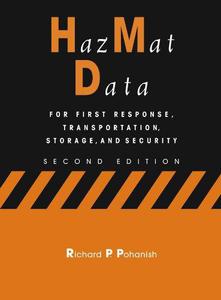
HazMat dаta: For First Response, Transportation, Storage, and Security By Richard P. Pohanish(auth.)
2004 | 1304 Pages | ISBN: 0471273287 | PDF | 49 MB
The HazMat Data, 2nd Edition provides a detailed reference for emergency responders and people who transport chemicals. Considering the events of September 11, the book is especially oriented toward first responder and emergency management personnel. Additions to this new Second Edition include Spanish language synonyms for all entries, and an increased overall number of synonyms. New to this edition is information on chemical warfare (CW) agents and Weapons of Mass Destruction (WMD)-nerve gasses, blister agents/vesicants, "blood agents," choking/pulmonary agents, and crowd-control agents (tear gasses, pepper sprays, etc.)-that might be used as weapons of terrorism. It clearly explains symptoms of exposure and appropriate treatment for the exposure when available, and describes what to do in an emergency situation. The book also gives the NFPA hazard classifications, as well as chemical hazard class information. Newly updated, The HazMat Data, 2nd Editio provides a comprehensive, up-to-date summary of this vital information.Content:
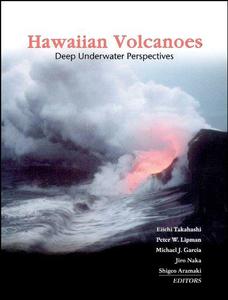
Hawaiian Volcanoes: Deep Underwater Perspectives By
2002 | 416 Pages | ISBN: 0875909876 | PDF | 80 MB
Published by the American Geophysical Union as part of the Geophysical Monograph Series. In the summer of 1963, when a group of Japanese scientists arrived at the aged building of the Hawaiian Volcano Observatory, run by the U.S. Geological Survey, there began a program of cooperation and friendship between American and Japanese volcanologists that continues to the present. The late Professor Takeshi Minakami, a top volcano-physicist long involved in research at various volcanoes, including Asama, then the most active volcano in Japan, led the Japanese group. The time coincided with a changeover in Hawaii, from the pioneering volcanologic studies of Harold Stearns, Gordon Macdonald, and Jerry Eaton to more comprehensive research by younger volcanologists. The Japanese team was also fortunate enough to witness a rift zone eruption at Kilauea volcano (Alae eruption, July 1963), a direct, eye-opening encounter with a volcano plumbing system in action.Content:
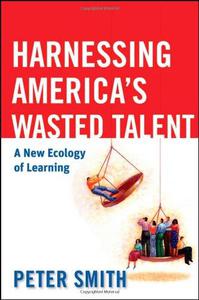
Harnessing America's Wasted Talent: A New Ecology of Learning By Peter Smith(auth.)
2010 | 200 Pages | ISBN: 0470538074 | PDF | 2 MB
Increasing success rates in higher education requires a new approach towards effective teaching and learning. Harnessing America's Wasted Talent provides tools to make this happen by highlighting the flaws in higher education, like using only the orthodox college model, preventing opportunity and wasting talent for many students. This reference explores Second Life, iTunes University, and Web 2.0 to capitalize on the capacity of every learner.This resource is essential reading for every college leader and policy-makers to meet all of students' educational needs.Content: Chapter 1 Wasted Talent (pages 1-20): Chapter 2 Maxed Out: Why Colleges Can't Meet This Challenge (pages 21-34): Chapter 3 The Paradox of Personal Learning (pages 35-45): Chapter 4 Different Strokes for Different Folks (pages 47-66): Chapter 5 Learning is More Than Strictly Academic (pages 67-77): Chapter 6 You Can't Get There from Here (pages 79-90): Chapter 7 The End of Scarcity: Education's Emerging Long Tail (pages 91-112): Chapter 8 Game Changers: New Media and the Open Education Resource Movement (pages 113-134): Chapter 9 Reaching the Middle Third: Talent?Friendly Colleges for the Twenty?First Century (C21Cs) (pages 135-156):
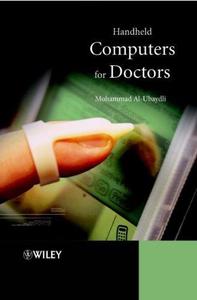
Handheld Computers for Doctors By Mohammad Al?Ubaydli(auth.)
2003 | 142 Pages | ISBN: 0470858990 | PDF | 2 MB
This is the first book to address the uses of handheld computers within clinical practice and considers the many different possible applications of handheld computers in a medical environment. The book champions the idea that handheld computers have a significant role to play in the future of clinical practice. It shows why and how these devices can help reduce paperwork, and how to use the technology without waiting for the IT department's latest expensive, complicated and overdue solution. The book is in three sections:Explains that handhelds, far from futuristic gadgets, are today's technology benefiting clinicians around the world. The ten chapters guide the user through all possible applications of these machines. Looks at three teams that put the handhelds to different clinical uses. Explains the tools and techniques that are useful in introducing the technology to a group.If you work in hospital or community medicine, you can take advantage of technology that is affordable, powerful, easy and effective. Handheld computers can be used for education, administration and clinical practice, and in association with colleagues to support communication and teamwork.Content: Chapter one So, You'd Like a Handheld (pages 1-5): Chapter two Choosing Hardware (pages 7-12): Chapter three Choosing Software for Yourself (pages 13-16): Chapter four Organizing Your Life (pages 17-23): Chapter five Taking Lecture Notes (pages 25-29): Chapter six Keeping Track of Patient Details (pages 31-36): Chapter seven Medical References (pages 37-42): Chapter eight Reading Electronic Books (pages 43-46): Chapter nine Games for Ward Rounds (pages 47-51): Chapter ten Carrying the Web with You (pages 53-57): Chapter eleven Handhelds for Patients (pages 59-63): Dr Laura DeanChapter twelve Case 1 - The Haematology Department (pages 67-73): Chapter thirteen Case 2 - The General Practice Surgery (pages 75-84): Chapter fourteen Case 3 - The Acute Medicine Department (pages 85-98): Chapter fifteen Making Change Happen (pages 101-106): Chapter sixteen Talking to the IT Department (pages 107-111): Chapter seventeen Choosing Software for the Team (pages 113-116): Chapter eighteen Training (pages 117-119): Chapter nineteen Electronic Documents (pages 121-128): Chapter twenty Getting the Funding (pages 129-137):


